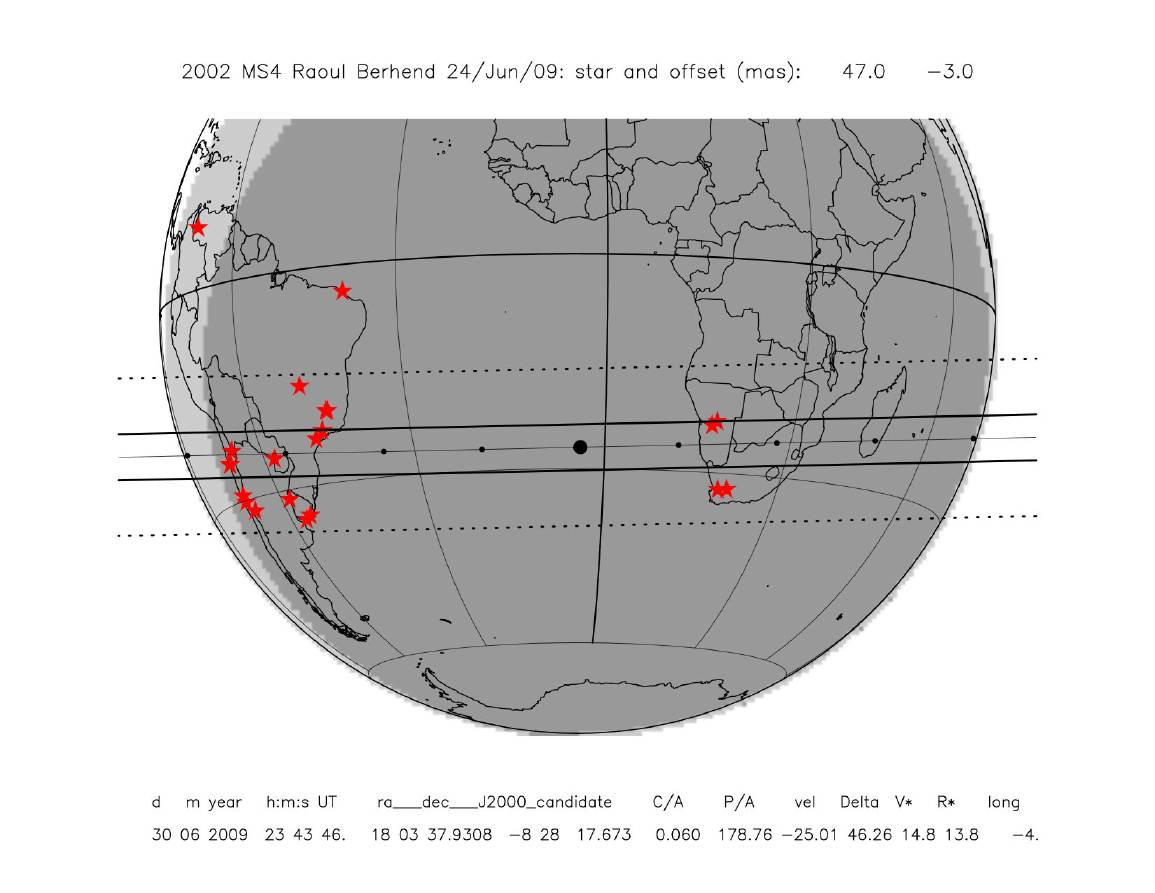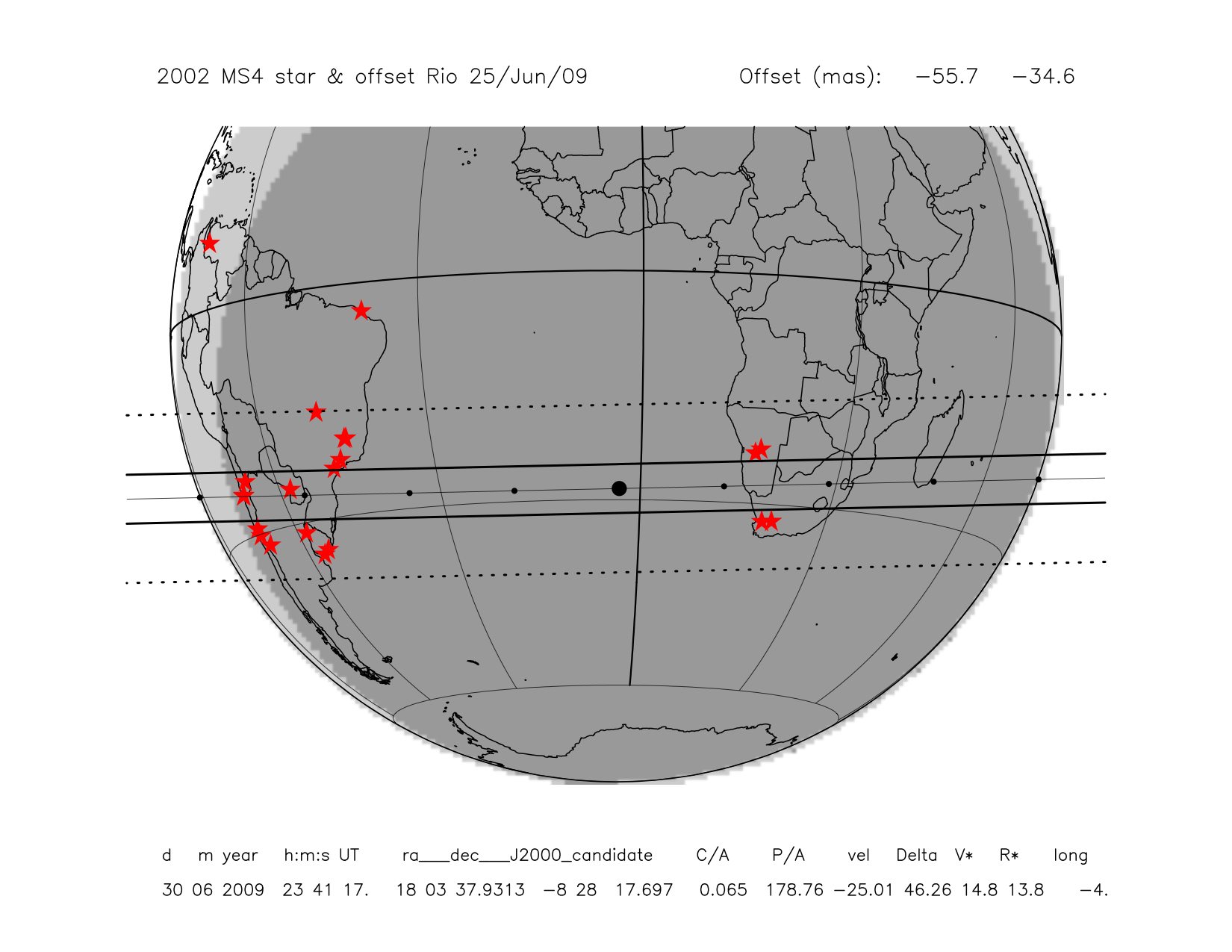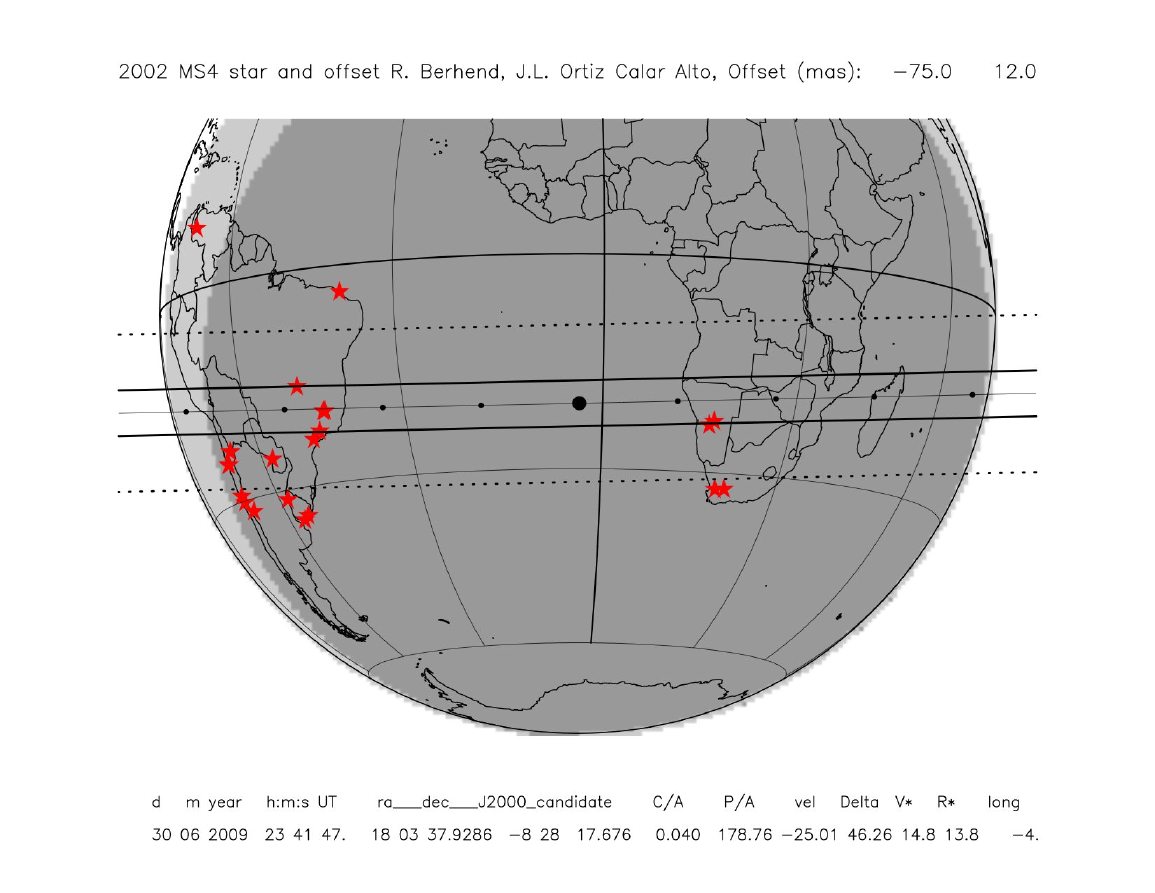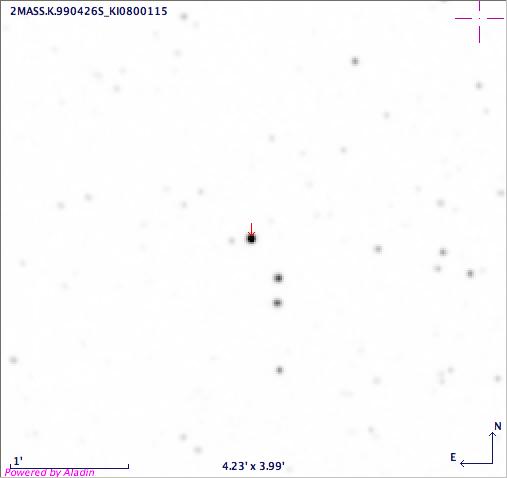 |
On 30 June 2008 around 23:40 -- 23:45 UT (night of Tuesday June 30th to Wednesday July 1st, 2009),
the Trans-Neptunian-Object 2002 MS4 may occult the star UCAC2 28945167, with Rmag~ 13.4 and:
RA= 18h 03mn 37.93sec
DE= -08d 28' 17.7" (J2000)
as seen from southern Africa and South America, see maps below.
Such an event, if observed at various sites, could allow us to:
- pin down 2002 MS4's radius to km-accuracy, while its diameter is presently poorly constrained around ~ 600-800 km.
- provide its shape, if non-spherical
- detect a possible faint atmosphere around that body.
 |
Prediction as of 24 June 2009, derived from an analysis by Raoul Berhend of Las Campanas 1-m Swope telescope CCD images taken on June 20-23, 2009.
The measured star position is written at the bottom line, and 2002 MS4 position offset withg respect to the JPL Horizons online ephemeris is written at the top line.
Black lines: 2002 MS4 shadow, assuming a diameter of 700 km. Dotted lines: typical uncertainty region, where the occultation might be observed. The dots are plotted every mn, shadows move from right to left at 25 km/sec. The larger dot is geocentric closest approach, occurring at the UT time indicated at the bottom of the figure. The red star symbols are potential observing sites.
 |
Prediction as of 25 June 2009, derived from an analysis by the Rio group, using Pic du Midi 1-m and Las Campanas 1-m Swope telescope CCD images. Otherwise, same comments as for the previous figure.
 |
Prediction as of 27 June 2009, derived from an analysis by Raoul Berhend and Jose Luis Ortiz, using Calar Alto 1.2-m teelscope. Otherwise, same comments as for the previous figure.
 |
K band 4.23x3.99 arcmin chart |